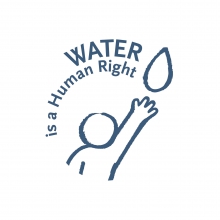
A recent lecture on water as the oil of the 21st century brought to mind several interesting points about where women fit into the discussion of water scarcity – or even if they have a place in the discussion.
Dr. Kellogg Schwab, one of the speakers on the panel, said that water is the nexus of energy, food, stability, and health. He went on to discuss the importance of looking at water scarcity from an interdisciplinary approach. This is a great start to a discussion of water scarcity – not only is water the nexus of several different areas of life, it is also the nexus of several different disciplines. With the acknowledgement of it being the tie between so many different areas should come the acknowledgement of water being the tie between several disciplines. Of course, an interdisciplinary approach in this context means engineering, economics, public health, public policy and development. Where, then, do women fit into this discussion?
In three out of the four presentations, women were cited as examples of how water scarcity can affect people – the tired statistics of how far women walk to gather so much water, or the impact of water scarcity on girls’ education. But women were not included in the interdisciplinary approach – no women’s studies, no human rights or sociology perspective. It is a discussion that, according to those involved, must still be dominated by science, or the mastery of men over nature. To be truly interdisciplinary, we need to look at the gender norms and power dynamics behind how and why women use water they way they do.
A second interesting point came up when discussing agriculture’s use of water. Agriculture uses 70 percent of the water supply, while household uses only use about 10 percent. Yet women, who are often portrayed as the most affected by water scarcity (and as the reasons for working on water scarcity), are generally in charge of the domestic uses of water. So if women are in charge of domestic uses of water and not agricultural ones, and agriculture is the biggest user of water, then why are women used to pitch the need for action on water issues? Should the focus be on reducing the amount of water that agriculture uses? (I recognize that there have been huge advancements on this point, however, the point is that it is not as widely known nor as widely used as a reason for acting on water scarcity).
Often, advocates for water issues discuss the need for a holistic view of water. To be truly holistic, we need to be exploring all sides of water scarcity – including the gender implications or the gendered uses of water. The division of labor among people, and the reasons that certain people do certain tasks, has huge implications for water use and scarcity. The security issues involved in women’s access to clean water and sanitation are also intertwined with the gender norms of society. To really address the issue of water scarcity, those issues have to be discussed as well.
Finally, the use of women as the reason for action strikes me as wrong as well. It brings to mind Laura Bush’s advocacy for women in the Middle East just in time to help justify former President Bush’s push for war in the area. Using women as justification for a larger goal is playing on sympathies of Western women for women in developing countries – ‘oh those poor women! We must help them!’ Absolutely their situation is unfair and awful (I wouldn’t want to walks miles carrying a jug of water), but to look at it just on the surface misses some of the point. Why is it just women carrying the water, and what role do men play in water scarcity?
This attitude also walks a fine line between sympathy and blame. One of the presentations discussed maternal and child health initiatives that focused on increasing the practice of handwashing. This is the perfect example – it is very easy to slip into thinking ‘how do these women not know to wash hands after going to the bathroom?’ I commend Koki Agarwal for not discussing it that way, but rather focusing on how they were targeting the message and how helpful it was in reducing child mortality. But this is a side effect, if you will, of using women to pitch water scarcity.
I want to see a discussion that is truly interdisciplinary. The other disciplines of economics, policy, and engineering are all important, but there needs to be a social context given to this discussion that allows women to not just be the subject of the problem. We need a truly holistic dialogue here.
(Photo Credit: GRIID.org)




